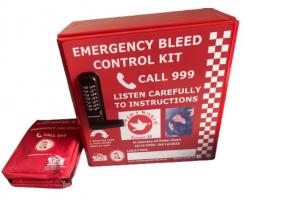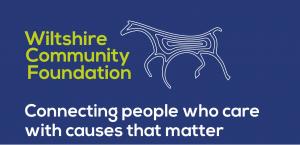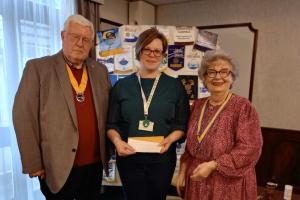Speaker Meeting, 6.15 for 6.30pm
Mon, May 13th 2019 at 6:15 pm - 8:00 pm
Speaker: Rtn. Jan Blankenstein
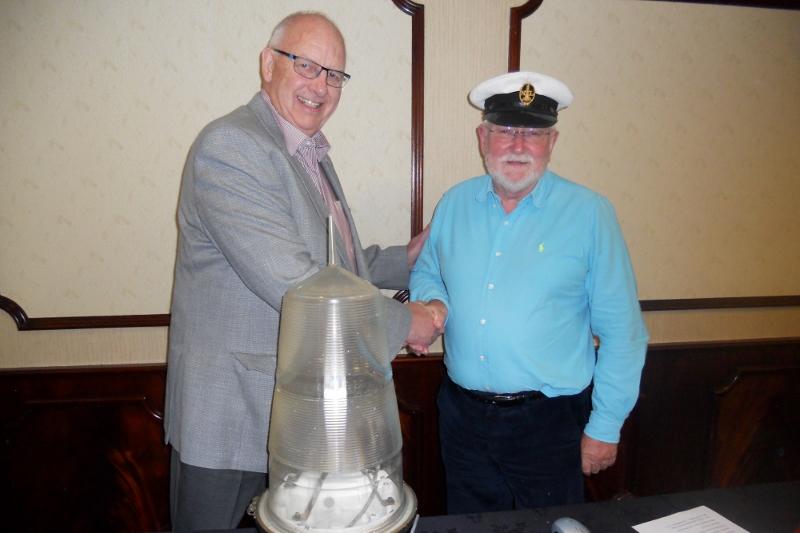
Club members please log in for more information.
It was appropriate that Past President David Collett had been asked to run this meeting. His Rotary classification is “Visual Communications” and our guest speaker, Jan Blankenstein, had for a short time been in the visual communication business too. He was a lighthouse keeper, or more specifically an OLK – an Occasional Lighthouse Keeper.
How did Jan come to be an OLK? Some 45 years ago whilst working in the far north of Scotland a friend, who worked at Cape Wrath lighthouse, asked him if he would like to join the team. In the mid 1970’s when Jan was there the team consisted of a PLK (Principal Lighthouse Keeper), two ALK’s (Assistant Lighthouse Keepers), and one OLK. The light was switched on at sunset and extinguished at sunrise. That meant that in the winter months the Cape Wrath light was operational for some 18 to 19 hours in 24.
The first ever lighthouse tower, thought to be 330 feet high, was the Pharos of Alexandria which was built nearly 2,300 years ago. Up until the late 18th century the light in lighthouses was created by wood or coal fires. With the advent of oil lamps better light was produced and then improved still further by the invention of vaporised oil burners. Gas, and then electricity, brought further improvements. The light was magnified by mirrors which required cleaning and polishing every day. In the 19th century Augustin-Jean Fresnel developed a lens, the so called Fresnel lens, which greatly extended the length of the light’s visibility.
The Cape Wrath Lighthouse is located at the most north-westerly point in Scotland, 120 miles north of Inverness and 10 miles from any village. It was built in 1828 by Robert Stevenson. Five generations of the Stevenson family built some 200 lighthouses, mainly in Scotland. The light at Cape Wrath was originally a paraffin lamp with red and white reflectors. This was replaced by mercury vapour lamps in 1978 and in 1980 an electrical power beam was installed. Currently, the light characteristic is four white flashes every 30 seconds and with its Fresnel lens it is visible for 28 miles. A fog-horn was fitted and in use until 2001.
Before automation there were plenty of jobs to keep the team busy. The duty keeper had to make sure the light was functioning properly at all times, there were the mirrors to polish and the clockwork turning mechanism to wind every hour. The vaporised paraffin lamp to prime, the diesel oil tank to keep topped up to keep the generator running, the foghorn to check and weather reports to do every 3 hours. Coaling and provisioning were annual events.
In the picture above Rotarian Jan (a member of Swindon Rotary Club) is wearing his Northern Lighthouse Board cap. On the table is a battery operated emergency light for use when lighthouses suffer a power failure.
'What We Do' Main Pages:
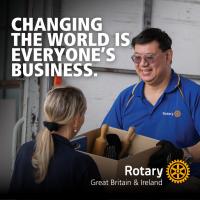
Corporate Membership enables small, medium and large businesses to join Rotary. Corporate Membership gives a company a unique platform for service, networking and professional and personal growth, rooted within the local community
more
Will you join our 250-Club lottery? We have run it for more than 25 years and in that time it has raised tens of thousands of Pounds for charity
more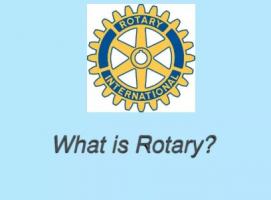
Rotary is one of the largest and most successful global membership and humanitarian service organisations in the world. It has 1.4 million members in over 200 countries.
more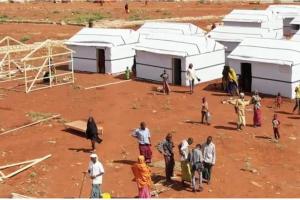
We make another donation to the charity which provides emergency shelter and assistance when disasters strike
more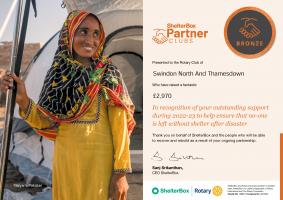
A Partner Club is a Rotary club that supports ShelterBox's work in disaster relief by donating over £2,000 in a Rotary year
more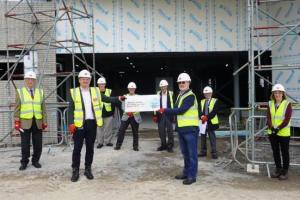
Rotary’s second major donation, of £208,000, was handed over on 7th July 2021 when local Rotarians visited the Great Western Hospital to view the build progress of the nearly completed radiotherapy unit.
more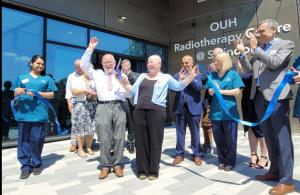
Brighter Futures launched their Radiotherapy Appeal in 2015. Today, 7 years later, a ribbon cutting ceremony has taken place at the Great Western Hospital
more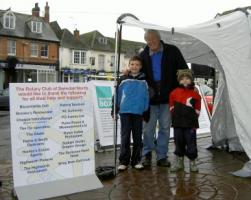
Rotarian Terry Williams' remarkable and unique fund raising effort, living in a ShelterBox emergency tent for a week in the Market Place, Highworth
more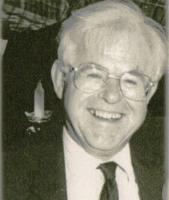
Sadly, Michael Bran, the last surviving Founder Member of the Rotary Club of North Wiltshire, the origin of the Club now called the Rotary Club of Swindon North and Thamesdown, passed away on 27 April 2025.
more